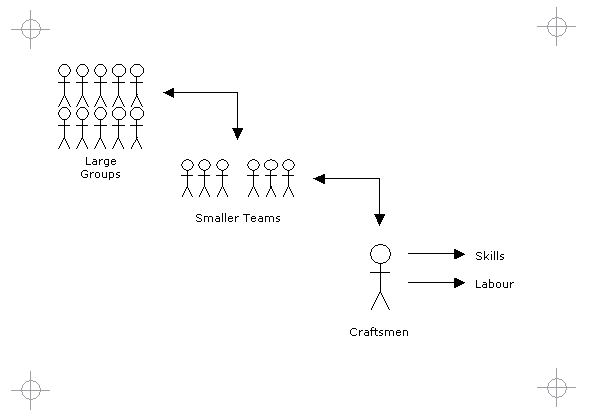|
Diagram
|
|
|

|
|
Title
|
|
|
Organisation of Construction
|
|
Building Architecture
|
|
|
It is estimated that about 100,000 men participated in the construction at Memphis. The manner in which this large labour force was divided into teams and the fact that they included craftsmen provides us with an organisational model for construction. The degree of precision was high even though the work was labour intensive.
|
|
Architecture Intensive Disciplines
|
|
|
Some programmers (not all) lack an appreciation for detail. Inconsistency and a lowering of software quality also results from time constraints. It does not help that tedious, detailed work is often delegated to so-called "junior programmers." Much of the authoring or coding requires the attributes of a craftsman. Smaller teams that recognise their work as a craft can apply themselves to peer review, skills development, knowledge sharing and quality assurance.
|
|
Case Study A: Large Corporate IT
|
|
|

|
|
|
This pattern was used in the sense that larger groups were broken down into smaller teams. However, it was initially a challenge for many to see themselves as craftsmen. Some did not initially see the need for coding standards and naming conventions. Three development skills were identified - abstracting, prototyping and crafting - to encourage developers to continually improve the quality of their work.
|
|
Case Study B: Small Commercial Team
|
|
|

|
|
|
The team of craftsmen was applied in this case. An environment for unit testing was created and tests were built into new components. After evaluating the existing system with the new architecture and standards, the new team was motivated to improve on the past design. The refactoring work was tedious and time consuming but the team put in the additional time and effort because they recognised the value and benefits.
|
|
|


